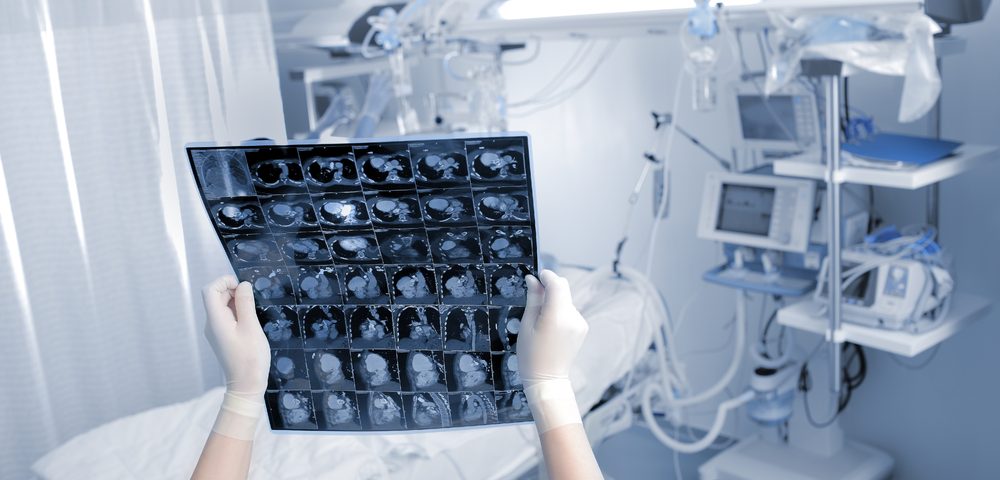Researchers have developed an artificial intelligence (AI) tool that shows the potential to predict prostate cancer aggressiveness and the likelihood of post-surgery relapse more accurately than standard methods can.
Called RadClip, for radiomic-clinicopathologic nomogram, the tool was developed by a team from the Center for Computational Imaging and Personalized Diagnostics (CCIPC) at Case Western Reserve University.
Its validation was described in a study titled “A novel imaging based Nomogram for predicting post-surgical biochemical recurrence and adverse pathology of prostate cancer from pre-operative bi-parametric MRI,” published in The Lancet’s EBioMedicine journal.
“We’re bringing together and connecting a variety of information” — from MRI scans to molecular data — “for providing a more comprehensive characterization of the disease,” Anant Madabhushi, PhD, the study’s senior author and CCIPC’s director, said a university press release.
The new AI tool will lead to more targeted treatment, the researchers said.
“RadClip allows physicians to evaluate the aggressiveness of the cancer and the response to treatment so they don’t overtreat or undertreat the patient,” said Lin Li, a team member and the study’s first author. Lin is a PhD student in the Case Western biomedical engineering department.
The CCIPD’s team, along with colleagues at other U.S. hospitals and clinics, retrospectively analyzed the clinical data of 198 men with prostate cancer treated across four institutions between 2009 and 2017. These institutions were Cleveland Clinic, The Mount Sinai Hospital, University Hospitals, and the Hospital of the University of Pennsylvania.
All of the men underwent an MRI followed by radical prostatectomy — surgical removal of the entire prostate gland, as well as some surrounding tissue — and had available follow-up data. That data included post-surgery blood levels of prostate-specific antigen (PSA), a biomarker of prostate cancer.
Those who received additional treatment or had sustained high levels of PSA after surgery were not included in the study.
Data from 71 patients were used to “train” the AI algorithm to identify differences in texture patterns inside and outside the tumor region in MRI scans, and to build a radiomic risk score, or RadS, that estimates biochemical recurrence-free survival (bRFS). bRFS is the time a patient lives following prostate cancer surgery without an increase in PSA levels, which may indicate cancer relapse.
The researchers then developed RadClip by combining RadS with pre-surgery PSA levels and biopsy-based Gleason scores, or grades. The tool was then tested in the remaining 127 patients.
RadClip’s prognostic performance was compared with that of commonly used tools, such as the Cancer of the Prostate Risk Assessment (CAPRA) score and the genomic-based Decipher Prostate RP.
Results showed that, at a median 35-month follow-up, RadClip was superior to the other two methods at predicting cancer aggressiveness and bRFS in prostate cancer patients who had undergone radical prostatectomy.
These findings suggest that RadClip may be used to help inform both prostate surgery — in predicting how much tissue around the tumor should be removed — and post-surgery therapeutic strategies. Such strategies include determinations of whether a patient is a good candidate for active surveillance or if his cancer needs more aggressive treatment.
“Having this information before surgery,” Li said, “provides surgeons and oncologists the time and space to adjust treatment plans and come up with a plan that’s best suited to the patient.”
Notably, the new AI tool may potentially be used instead of genomic-based tests that “cost several thousand dollars and involve destructive testing of the tissue,” Madabhushi said, noting that “prognostic predictions from an MRI scan provide a non-invasive method for making both short-term and long-term decisions on treatment.”
The team noted, however, that the study had some limitations, including its retrospective nature and the fact that it did not predict the benefit of additional treatment. Another limitation was the use of biochemical recurrence as a marker for metastasis and disease relapse due to the short post-surgery follow-up period.
“In spite of these limitations, our study suggests that with additional independent multi-site validation, [RadClip] could potentially be used for pre-operative risk stratification in patients with [prostate cancer] to allow for more effective treatment management,” the researchers wrote.
Clinical trials are needed to confirm RadClip’s predictive value, the team noted. They plan to conduct further tests to assess whether the tool can be used to identify which patients undergoing prostatectomy should receive additional treatment.

